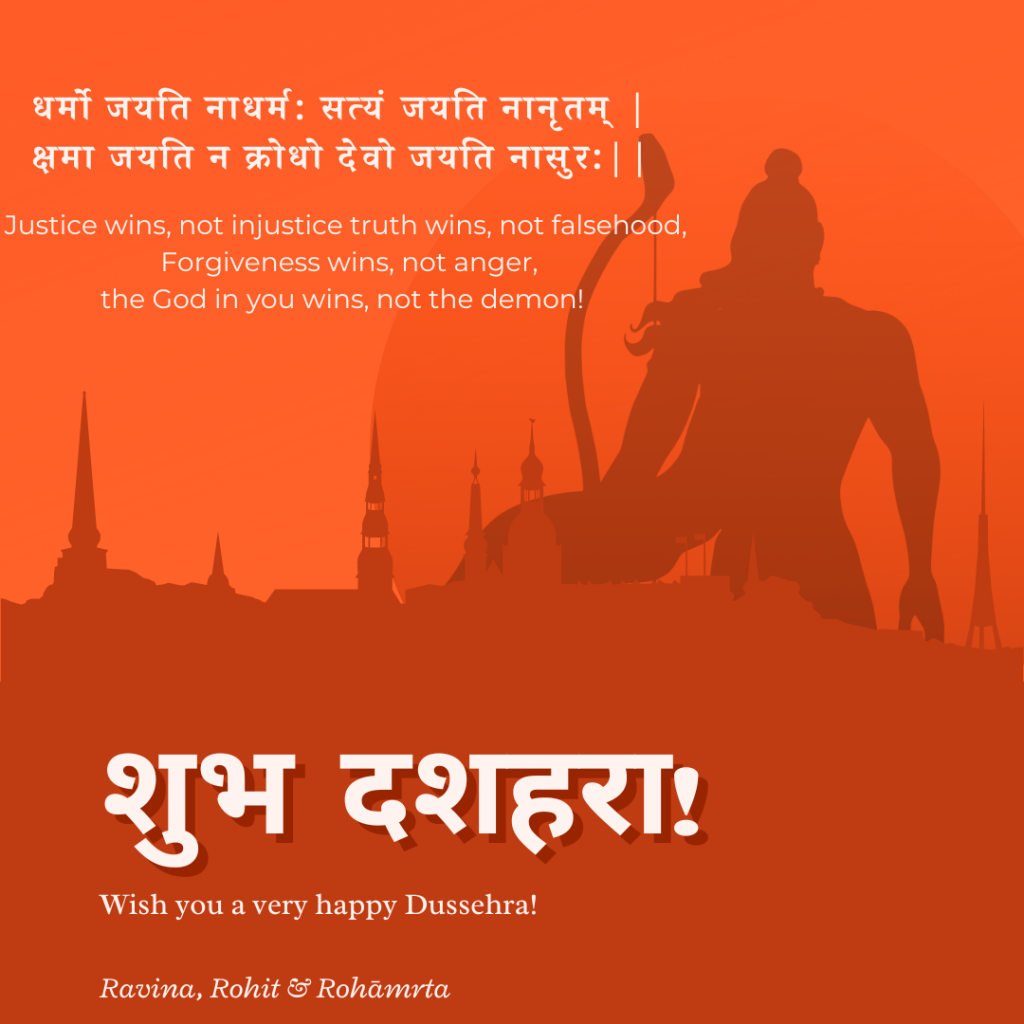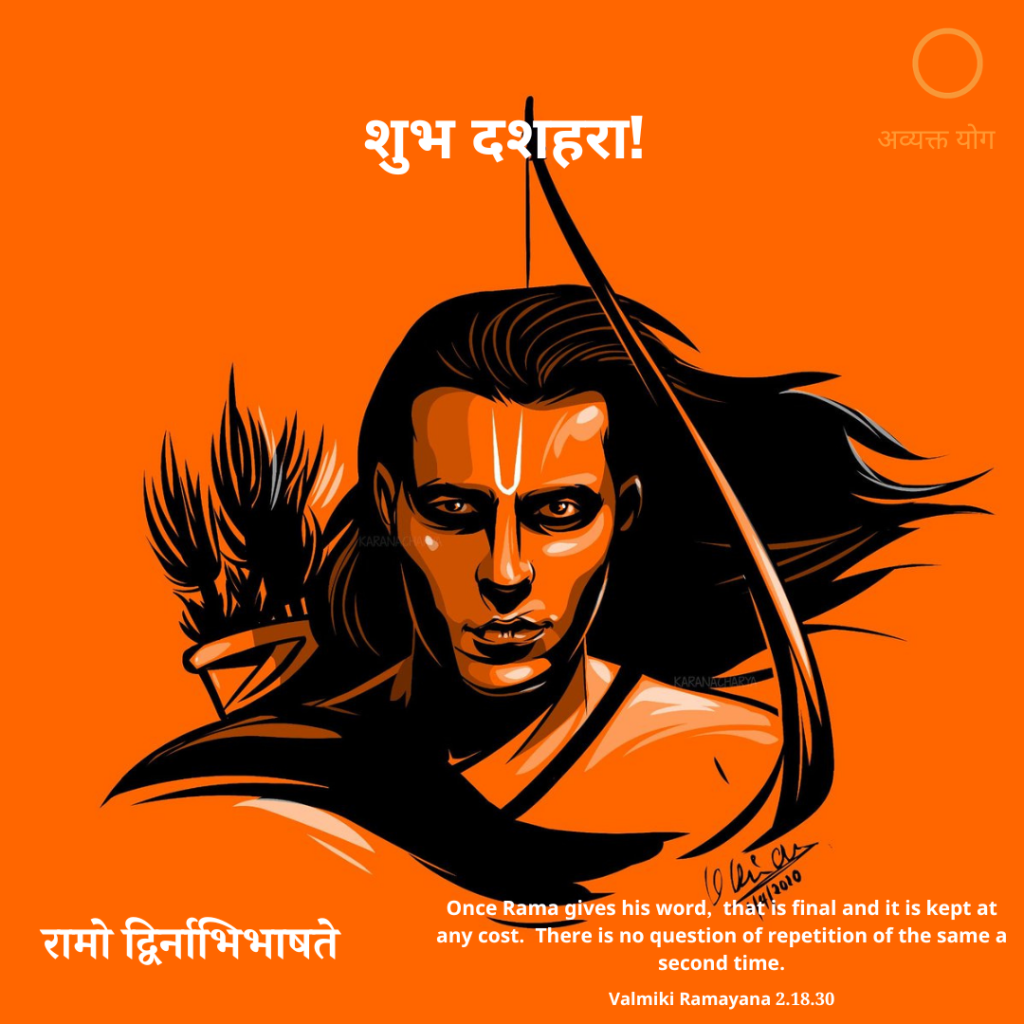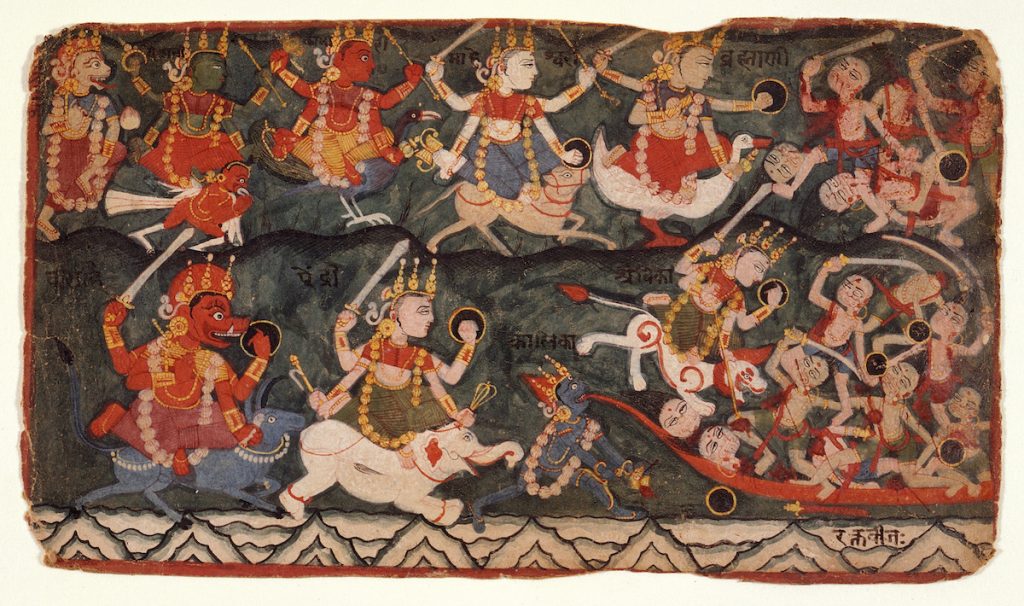Time is a Circle? Einstein’s field equations predict a universe which curves back upon itself, such that anyone traveling in a wide enough circle across the cosmos would return to the point at which they began their journey. Although the present may lead to the future, the future leads to the past.
Western philosophy is linear – x leads to y. Eastern philosophy is circular – all about cause and effect. There is no good and evil in Sanatana Dharma – actions are not categorized as good action and bad action. All that matters is consequence, which is the effect of that action. Good actions lead to good consequences and bad lead to bad. You also know this as karma.
The circular philosophy is visible in life itself. We start with nothing, then accumulate all through our lives, and when it is time to go, we leave with nothing. What grows tall, also bends with time and falls back to earth…and then rises again.
And so today, as Dharma is restored once again and Ravana is vanquished, one finds oneself at a starting point of sorts…no, this is not the end. This is the beginning of yet another circle…where you accumulate bad habits once again, until a point comes that you need to cleanse yourself once again – another Navrātri, and another Vijayadashami.
Again, and again…and again.
The circle of life:)
शुभ दशहरा! Happy Vijayadashami!


Read the previous part here…
The Devi then struck Raktabīja with her spear, and the fierce Kālī drank up all his blood before it could spill to the ground. Raktabīja struck back, but failed to even touch the Devi. As she kept striking him with her spear, and her swords, Kālī kept drinking the blood that flowed from his wounds, now allowing even. single drop to spill to the ground. Raktabīja fought hard, but soon lost all his blood, and, after letting out a loud roar, fell to the ground, lifeless.

The asura armies now started to flee, seeing the once-powerful Raktabīja killed in combat. Niśumba rushed ahead with his forces, and Śumba too joined in with his, as they directed their rage at Devi Chandika.
A great battle followed. Śumba and Niśumba rained down arrows on the Devi, and she responded by splitting their arrows with hers. Niśumba hit the lion on the head, and tried to attack the Devi with his spear. She quickly reduced it to ashes, and struck him with her arrows, severely wounding him.
Seeing Niśumba on the ground, Śumba got furious, and standing in his chariot, covered the entire sky with his eight arms and his weapons, and advanced menacingly towards the Devi. Seeing him approach her, the Devi blew her conch and with a twang of her bow, filled the earth and the sky with the reverberation of her intentions. The asuras trembled as they saw Kālī roaring in anticipation and this enraged Śumba even more. He rushed towards Chandika, only to run into her spear as she pierced his arm. He fell to the ground, wounded.
Niśumba saw this, and quickly created a huge form of himself with ten thousand arms, and hurled ten thousand chakras at the Devi. She split each of them with her arrows, and shot an arrow splitting his mace into two. Niśumba grabbed his spear and threw it at the Devi, but it missed, and she held her own spear and in a moment, pierced his heart with it.
From Niśumba’s heart sprung another being, who shouted at the Devi to stop, but the Devi didn’t, and she severed his head with her sword, as it dropped to the ground, it’s life taken from it.
The Devi and her śaktis quickly ran through the rest of Niśumba’s army, and all his generals and soldiers met the same fate as the great asura.
Seeing the dead body of his younger brother, Śumba shouted at the Devi “O Durga, you are arrogant and conceited. You depend on others to fight your battles, and think highly of yourself. Fight me alone, if you have the courage!”
The Devi retorted “I alone exist in this Universe, oh wicked asura. These are but manifestations of my own power!” And as she said this, the various śaktis merged into her own body, and Devi Ambika alone remained. “O Śumba, all my manifestations have merged into me, and I stand alone. What are you waiting for?”
Then began the deadly battle between the Devi and Śumba, and all the devas and asuras watched. Showers of arrows came down on both sides, as they engaged in a combat that shook the three worlds. The asura king tore through all the arrows and spears that the Devi hurled at him, and the Devi shattered his arrows into thousands of pieces. She destroyed his weapons, and then his horses, his chariot, bow, and mace.
Śumba leapt from his chariot and tried to hit the Devi with his fists. The Devi struck him on the chest, making him fall to the ground. He sprung back, and jumped high into the sky, seizing the Devi and pulling her along with him. They fought in the skies, toe to toe, until the Devi lifted him, whirled him around and threw him to the ground. As he tried to get up, she grabbed her spear and pierced his chest with it, thus bringing him to his end. Śumba died, and the devas rejoiced. Their tormentor was no more, and dharma had once again been restored.
What is the significance of this great battle? What do Suratha and Samādhi learn from these stories? How does Rishi Medhas help them? We will find out tomorrow!
